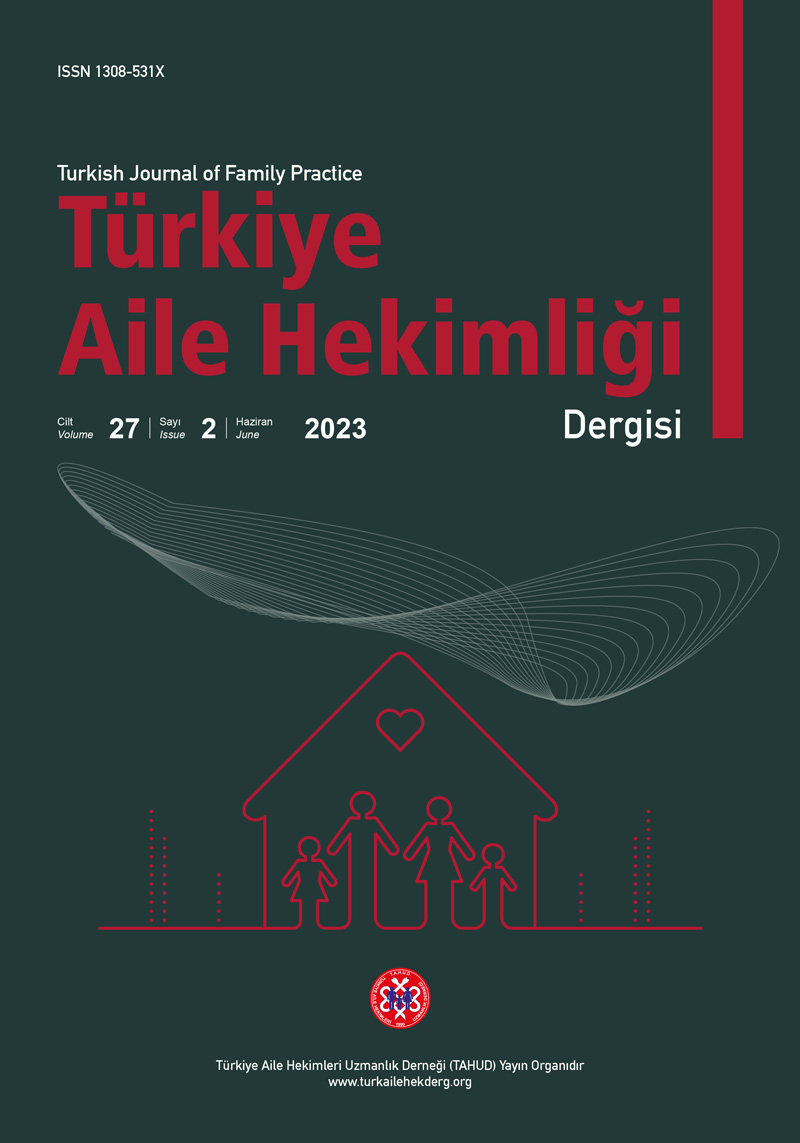Öz
Amaç: Bebeklik ve erken çocukluk döneminde pek çok faktör dil gelişimini etkilemektedir. Bu çalışmada 16-36 ay arasındaki çocukların ekran maruziyetinin, ailesel bazı sosyodemografik verilerle ilişkisi ve çocuğun dil ve konuşma gelişimi üzerindeki etkisi Türkçe İletişim Gelişimi Envanteri-II (TİGE-II) ile değerlendirilmiştir. Ekran maruziyeti ve maruziyet sürelerinin, çocuktaki dil ve konuşma gelişimine etkisi incelenmiştir.
Yöntem: Çalışma tek merkezli, kesitsel bir çalışmadır. 1 Ekim 2022- 1 Aralık 2022 tarihleri arasında Genel Pediatri Servislerinde takip ve tedavi edilen, çalışmaya katılma kriterlerini karşılayan 90 hasta çalışmaya dahil edilmiştir. Hastaların ve anne-babalarının sosyodemografik verileri ve ekran kullanım özellikleriyle ilgili tarafımızca oluşturulan 25 soruluk anket uygulanmıştır. Çocukların dil gelişimi düzeylerini ölçmek için TİGE-II kullanılmıştır. Veri analizi için SPSS 25.0 paket programı kullanılmıştır ve istatistiksel anlamlılık düzeyi p<0,05 olarak kabul edilmiştir.
Bulgular: Katılımcıların yaş ortalaması 25 aydı ve %58,9’u erkek idi. Çocukların %88,9’unun ekranla tanıştığı, ekran kullanılmaya başlanan yaşın çocukların tamamında 2 yaşından önce olduğu ve çocukların %55’inin bir günde bir saatten fazla ekran kullanım süresi olduğu görüldü. Araştırmamızda ekran maruziyeti hiç olmayan çocukların TİGE-II puanlarından söylenen sözcük puanı, ortalama sözce uzunluğu puanı ve durum ekleri puanı daha yüksek bulundu. Ayrıca ekran izlemeye 13-24 ay arasında başlayan çocukların, 0-12 ay arasında izlemeye başlayan çocuklara göre söylenen sözcük puanı, sözcük kullanım puanı, sözcük eki puanı, birden fazla sözcüğü cümle içinde kullanma puanı, ortalama sözce uzunluğu puanı, durum ekleri puanı, fiil ekleri puanı ve karışık cümle yapısı puanı anlamlı olarak daha yüksek bulundu.
Sonuç: Çalışmamızda çocuklardaki ekran maruziyetinin dil ve konuşma gelişimini olumsuz yönde etkilediği görülmüştür. Aile hekimlerinin çocuğun dil gelişimini sorgulaması, ekran maruziyetinin olumsuz etkilerini ailelere anlatması, çocuklarla kaliteli ve etkileşimli vakit geçirme konusunda bilgi vermesinin, ekran maruziyetinin azaltılmasına katkı sağlayacağı düşünülmektedir.
Anahtar Kelimeler: Çocuk, dil gelişimi, ekran, televizyon, TİGE-II, aile hekimliği
Telif hakkı ve lisans
Telif Hakkı © 2023 Yazar(lar). Açık erişimli bu makale, orijinal çalışmaya uygun şekilde atıfta bulunulması koşuluyla, herhangi bir ortamda veya formatta sınırsız kullanım, dağıtım ve çoğaltmaya izin veren Creative Commons Attribution License (CC BY) altında dağıtılmıştır.










